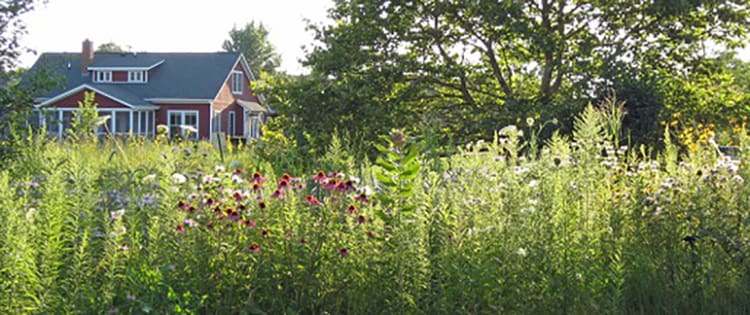Our cottage, Haven Hill, in Northern Wisconsin sits on three woodland acres overlooking a large, deep spring-fed lake. We have owned the property for about 20 years.
Over the years, I have added many flowers, plants, shrubs, and trees to the landscape for medicinal, aesthetics purposes and to attract insects in the garden. However, there are a few that I regret planting. I thought they were worth sharing.
Spiderwort
Spiderwort comes in many varieties.
Tradescantia ‘Sweet Kate’ has bright yellow foliage that emerges in late spring. It grows to about 14 inches tall with brilliant purple flowers. The plant self-seeds and grows everywhere in tight bundles.
Although the flower is my favorite color and very pretty, the tight bundles choke out other plants.
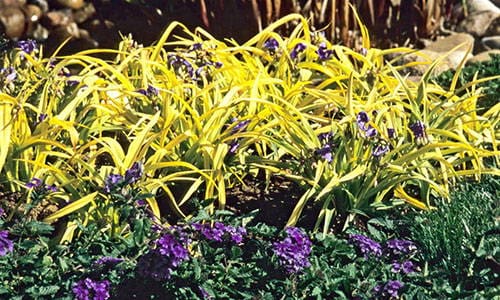
Spiderwort grows vigorously with roots about 2-3 inches and is tightly packed making it difficult to remove. The flower lasts only one day; it is not necessary to deadhead the plants. And since the cottage is not our primary residence and we are not there all of the time, we did not deadhead the plants ever… that is, until this year.
I didn’t know that without deadheading, the plant is prone to self-seed. Also, the flowerbed is in direct sunlight which results in better blooms.
So this summer, we deadheaded the plant and moved much of it to the spacious front prairie garden. This allowed the vinca that was underneath to spread and not be smothered by the spiderwort in the front flowerbed. We positioned the remaining spiderwort by some landscape rocks and in front of the stone porch wall as a backdrop to the flower bed. It also helped with weeding the tall grasses that grew among the spiderwort.
Most importantly, the spiderwort now provides a very attractive view when driving up the driveway or walking to the front door along the flagstone path. Now, I am looking forward to the spiderwort spreading in the prairie garden down to the lake. That should be a beautiful site!
Related: These 9 Common Garden Plants Are Toxic To Chickens
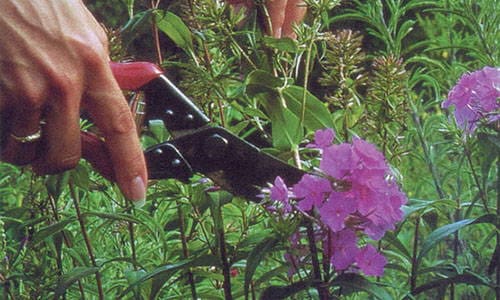
Daylilies
This low-maintenance perennial has a long bloom period.
Since it can grow in almost any soil quality and it is predominantly disease and pest-free plus drought-resistant, daylilies can spread quickly. The daylily is known as Hemerocallis from the Greek hemera meaning “day” and kallos meaning “beauty.” Although each flower lasts one day, there can be 12-15 buds on each scape with about 4-6 scapes on each plant making the flower appear to bloom forever.
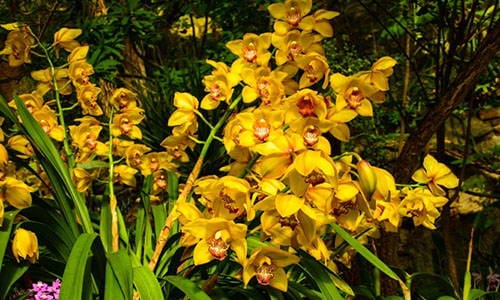
I planted the daylilies in many places: around the mailbox on the dirt road, circling the outdoor light, in front of the bunkhouse, along the driveway, and for a border in front of the sunroom overlooking the prairie garden and lake. I originally combined early, late, midseason, and repeat bloomers so there could be flowers from springtime through the end of summer. All of the areas are in full sun so the flowers spread profusely.
I wish that I did not plant so many of them together in some of the areas. They grow so tall and, consequently, the grass grows equally tall so some of the beds look like a jungle. It is very difficult to weed since the lilies grow so close together. It wasn’t until this past June that I divided the plants to control their spread. This resulted in better and more frequent blooms.
There are thousands of daylilies to choose from that come in many colors, shades, and colors. Among my favorites are the Stella de Ora, the yellow-flowered lilies that bloom all summer; Ruby Spider with their wide scarlet-red flowers with golden throats; and two varieties of purple lilies, Catherine Woodbury which blooms in mid to late-summer with fragrant lavender-pink lilies and Indian Giver with their large rich-purple flowers blooming slightly earlier to late summer.
I enjoy the mixture of the lilies and am satisfied with how they are now separated so I can get the areas weeded more easily.
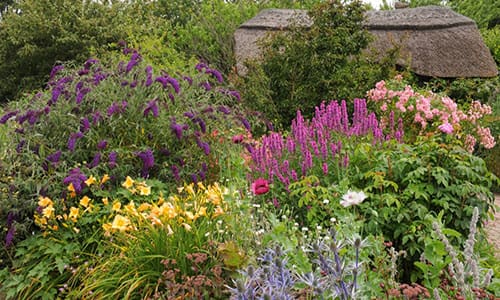
Prairie Roses (Rosa arkansana)
This woody native perennial enjoys part shade and sun and grows in prairies, edges of woods, and along roads.
In our back acre woods, the prairie rose has spread with each plant growing 6-40 inches and blooming in June and July. 1-4 flowers typically form at the tips of new ground shoots and at the tips of second-year lateral branches of older woody stems.
Related: You Should Never Plant This Near Your House
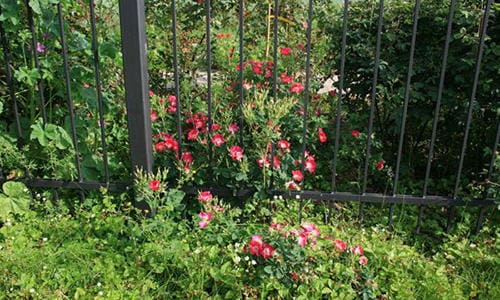
The flowers are a beautiful shade of pure white to deep rose with some of them bi-colored and 1.5-2 inches across with 5 broad rounded petals with wavy edges often notched at the tip; all with a golden center. The prairie roses spread from underground rhizomes and often form colonies.
The plant is extremely sturdy. The stems above the ground live for a few years and then die back to be replaced by newer shoots. Despite trying to cut back the number of prairie rose plants, they creep back every year into the outdoor sand volleyball court, fill up the driveway, and travel under the driveway to the other side of the woods and throughout other areas where they are not wanted.
I have had so many compliments about the prairie roses in our yard, and have given many plants away so they can grow in other’s gardens and be enjoyed by my friends and family members. And I am very cautious where I plant/transplant them as I now know that they really do spread quickly.
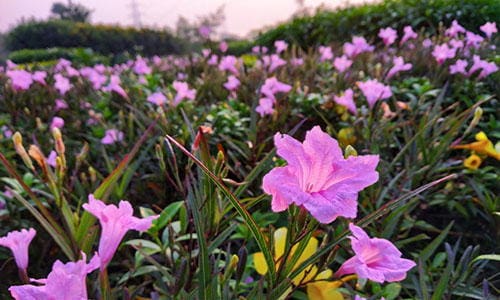
General Aspects
I love flowers, plants, shrubs, and trees. They boost my mood and make me smile. They add a splash of color to the landscape and attract insects including bees that are so necessary in our habitat.
However, I have learned that a few of my choices may not have been the best choices.
Spiderwort, daylilies, and prairie roses have all aggressively taken over areas of land that were not intended for their growth.
With more knowledge, and a lot of time transplanting, cutting back, and weeding, I have managed to tame the landscape and reclaim the name Haven Hill. There is always so much to learn about gardening.
You may also like:
 Stop Doing This On Your Property!
Stop Doing This On Your Property!
Similar to Morphine: The Best Natural Painkiller that Grows in Your Backyard (Video)
Cheap Ways To Get Rid Of Invasive Ants
If You Have Pets, Get Rid Of These Plants Immediately!
How To Attract Toads and Frogs to Your Garden (And Why You Should Do It)
